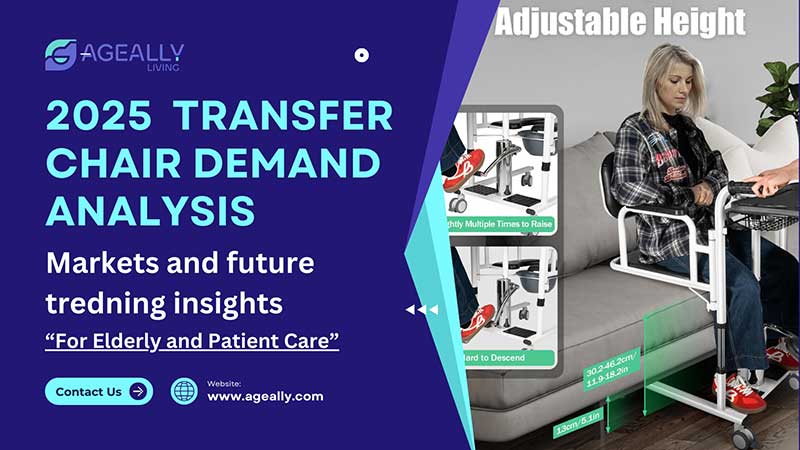As we age or face mobility challenges due to disabilities, everyday tasks like moving from a bed to a chair or getting in and out of a car can become daunting.
Understanding the Critical Role of Transfer Chairs in Elderly and Patient Care: A Global Perspective
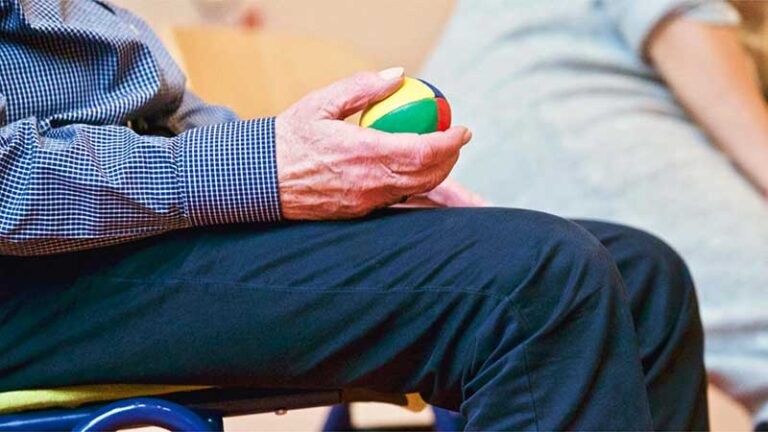
Why Transfer Chairs Matter
For millions of elderly individuals and patients worldwide, simple daily tasks like moving from a bed to a wheelchair or navigating tight spaces can pose significant challenges. This is where transfer chairs, specialized mobility aids designed to safely and comfortably assist with seated transfers, play a transformative role.
Unlike standard chairs, these devices prioritize safety features (e.g., adjustable armrests, locking wheels), ergonomic support, and adaptability to diverse care environments, from hospitals to home settings.
But why does demand for these chairs vary so dramatically across countries?
The answer lies in a complex interplay of demographics, healthcare systems, cultural values, and economic realities. Let’s explore how these factors shape the needs of aging populations and patients globally, and why understanding these differences is critical for caregivers, policymakers, and manufacturers alike.
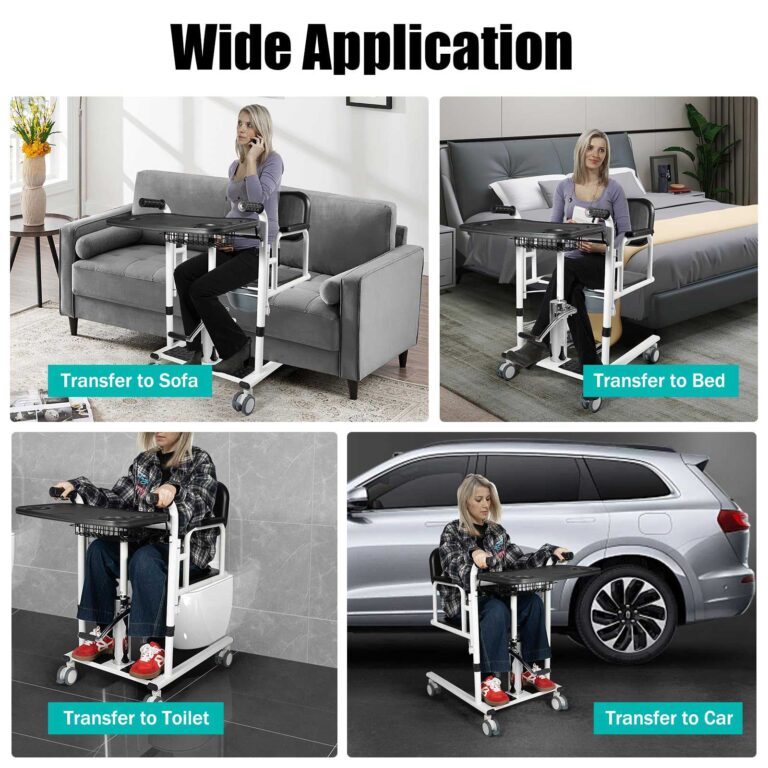
The Growing Need for Transfer Chairs
By 2050, 1 in 6 people globally will be over 65 (UN data), with countries like Japan and Italy already seeing over 28% of their populations in this age group. Aging often brings reduced mobility, chronic conditions (e.g., arthritis, stroke recovery), and higher risks of falls, issues that transfer chairs directly address. Similarly, patients recovering from surgeries or managing disabilities rely on these chairs to maintain independence and reduce caregiver strain.
The urgency of Need for Transfer Chairs isn’t uniform.
Japan’s “super-aged” society (30% elderly) has fueled demand for high-tech, space-saving transfer chairs that integrate with smart home systems.
In contrast, Nigeria, where just 3% of the population is over 65, faces lower immediate demand but must prepare for a projected 200% rise in its elderly population by 2050.
Healthcare Infrastructure: A Make-or-Break Factor
Access to transfer chairs hinges heavily on a country’s healthcare framework. In nations with robust public health systems (e.g., Sweden, Canada), government subsidies often cover assistive devices, making advanced models accessible to low-income users.
Meanwhile, in privatized systems like the U.S., affordability becomes a barrier, despite high demand, many families struggle to pay $800–$2,500 for electric transfer chairs out-of-pocket.
In developing regions, limited infrastructure compounds the issue. For example, rural areas in India or Kenya may lack clinics equipped with basic mobility aids, forcing families to improvise with unsafe alternatives like makeshift wheelchairs or carrying patients manually.
Cultural Attitudes: Shaping Acceptance and Design in Transfer Chairs
Cultural perceptions of aging and disability profoundly influence transfer chair adoption. In collectivist societies like China or South Korea, multigenerational households often prioritize home care over institutionalization, driving demand for compact, home-friendly chairs that blend discreetly into living spaces.
Conversely, in Western countries like Germany, there’s greater acceptance of institutional care, spurring demand for heavy-duty chairs tailored to nursing homes.
Stigma also plays a role. In some communities, using mobility aids is seen as a “loss of dignity,” leading to underutilization of transfer chairs. Manufacturers in these regions must balance functionality with aesthetics, think chairs resembling stylish recliners rather than clinical devices.
Economic Realities: Affordability vs. Innovation
While cutting-edge features like AI-powered fall detection or pressure-relief cushions are celebrated in high-income markets, cost remains a critical barrier elsewhere.
In Brazil or Indonesia, families often opt for basic, manually operated models priced under $200, prioritizing durability over high-tech add-ons.
Yet even affordability strategies vary. Some governments, like France, offer tax incentives for families purchasing assistive devices, while NGOs in Sub-Saharan Africa distribute donated chairs to underserved communities.
Looking Ahead: A Tool for Dignity and Independence
Transfer chairs are more than just medical equipment,, they’re a lifeline to autonomy for vulnerable populations. As global demographics shift, addressing regional disparities in access and design will be key to ensuring no one is left behind. From Tokyo to Nairobi, the challenge remains the same: creating chairs that aren’t just functional, but also culturally resonant, economically accessible, and adaptable to evolving care needs.
Transfer Chairs is Not Just About Age, It’s About Context
The global market for transfer chairs is booming, projected to exceed $1.2 billion by 2030. But behind this growth lies a mosaic of regional nuances. From Japan’s tech-savvy seniors to Nigeria’s under-resourced rural clinics, demand for these critical mobility aids is shaped by far more than just aging populations.
Let’s unpack the five key factors driving these disparities, and what they mean for caregivers and innovators worldwide.
1. Demographic Trends: The Aging Tsunami and Chronic Disease Burden
Population aging isn’t a uniform crisis. While 30% of Japan’s population is over 65, countries like India still have youth-dominated demographics (only 7% elderly). Yet chronic diseases like diabetes and Parkinson’s are rising globally, creating demand even in younger populations.
- Europe sees 40% of transfer chair users under 65, driven by disability and post-surgical recovery needs.
- Sub-Saharan Africa faces a dual challenge: low elderly populations today but a 150% projected increase in age-related disabilities by 2050 (WHO).
This uneven aging curve means manufacturers must balance immediate needs (e.g., Japan’s ultra-lightweight chairs) with future-proof designs for emerging markets.
2.Healthcare Infrastructure: Who Pays, Who Gets Left Behind?
A country’s healthcare model dictates access.
- Scandinavian Nations: Universal healthcare covers 80-90% of transfer chair costs, prioritizing premium ergonomic models.
- USA: Privatized insurance leaves 1 in 4 families paying out-of-pocket, fueling demand for mid-tier 500–500–1,200 chairs.
- India: Only 15% of rural hospitals stock transfer chairs, pushing families toward risky manual transfers.
The gap extends to care settings. In Germany, 60% of transfer chairs are used in nursing homes, demanding heavy-duty frames. In Vietnam, 80% are for home use, favoring compact, foldable designs.
3.Cultural Attitudes: Dignity, Family, and Stigma
Cultural norms silently steer demand:
- East Asia: Filial piety drives home care trends. In China, chairs with disguised designs (e.g., resembling plush armchairs) sell 3x faster than medical-looking models.
- Middle East: Social stigma around disability leads to underreporting of needs. Manufacturers like Turkey’s Arjo now offer “discreet” models with decorative fabrics.
- Nordic Countries: Openness about aging supports demand for high-visibility, feature-rich chairs used proudly in public spaces.
Religious practices also matter. In Saudi Arabia, transfer chairs with swivel seats for prayer-time adjustments see 25% higher adoption.
4.Economic Realities: 200vs.2,000 Divide
Price sensitivity fractures the market:
- High-Income Markets: Willing to pay $2,000+ for AI-driven chairs with fall alerts and telehealth integration (e.g., Canada’s Prime Engineering).
- Emerging Economies: Opt for sub-200 manualchairs, prioritizing durability. India’s KarmaHealthcare, sells bamboo framed chairs for 200 manual chairs, prioritizing durability. India’s∗∗KarmaHealthcare∗∗sellsbamboo−framed chairs for 85, tailored to monsoon climates.
Government policies amplify disparities. France reimburses 75% of chair costs for low-income families, while Nigeria lacks national subsidies, forcing 90% of users to rely on charity donations.
5.Regulations and Tech in Transfer Chairs: Safety vs. Innovation Speed
Standards vary wildly:
- EU: Requires EN 12184 certification, mandating crash tests and material safety checks, adding 20% to production costs. EN 12184 certification Full content
- ASEAN: Lacks unified regulations, allowing cheaper imports but raising safety concerns (e.g., 30% of chairs in Philippines fail basic stability tests).
Tech adoption mirrors infrastructure. Japan leads in robotic chairs, while Brazil focuses on low-tech innovations like non-slip fiber armrests for humid environments.
6.The Hidden Factor: Climate and Geography
Often overlooked, environmental needs shape designs:
- Gulf States: Demand heat-resistant polymers (up to 50°C tolerance) to prevent material warping.
- Nordic Regions: Chairs with heated seats and frost-proof wheels dominate.
- Island Nations: Corrosion-resistant coatings are critical in high-salinity air (e.g., Fiji).
The transfer chair market isn’t just growing, it’s fragmenting. Success hinges on hyper-localized strategies: a $2,000 smart chair for Osaka retirees won’t solve Lagos’ affordability crisis. For manufacturers, the mantra is clear: Adapt or miss the mark.
Why Transfer Chair Demand Isn’t One-Size-Fits-All: 5 Key Factors Shaping Elderly and Patient Needs
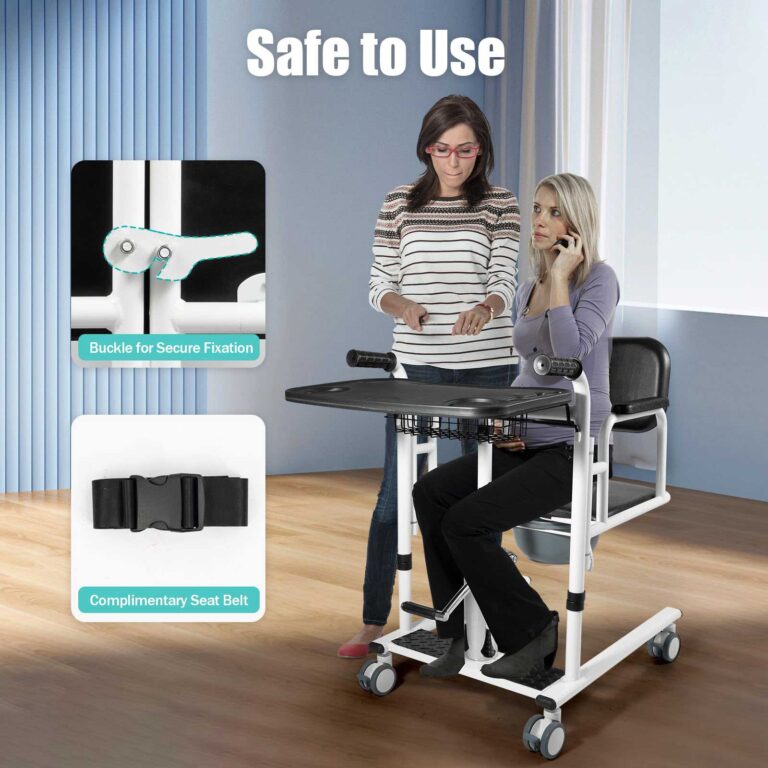
The Puzzle of Global Demand
Imagine a 75-year-old stroke survivor in Tokyo, a diabetic patient in Mumbai, and a post-surgery retiree in Berlin. All three need transfer chairs, but their ideal devices couldn’t be more different. Why? Demand for these lifesaving tools is shaped by invisible forces: cultural quirks, economic gaps, and even climate. Let’s dissect the five pillars driving global demand and what they reveal about aging and care in the 21st century.
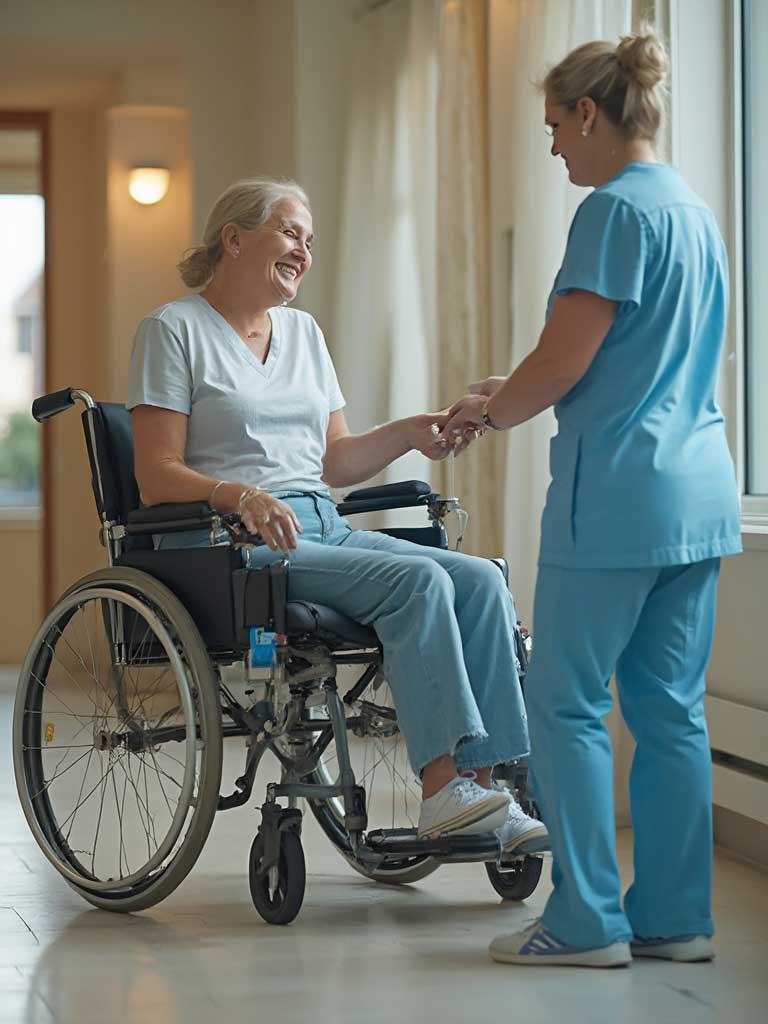
1.Demographics: More Than Just Gray Hair
Aging populations dominate headlines, but the story is nuanced:
- Japan: 30% of its population is over 65, creating demand for robotic transfer chairs that assist with lifting (e.g., Toyota’s Patient Transfer Assist Robot).
- Nigeria: Only 3% are elderly today, but strokes and injuries drive demand among younger adults.
- USA: 55% of transfer chair users are under 70, linked to obesity and joint surgeries.
Chronic diseases amplify needs: In Brazil, 16% of adults have diabetes, driving demand for chairs with adjustable footrests to prevent ulcers. Meanwhile, Europe’s 34 million arthritis sufferers prioritize low-effort sliding mechanisms.
2.Healthcare Systems: The Gatekeepers of Access
Who pays? Who gets priority? The answers vary wildly:
- Sweden: Tax-funded care covers 95% of transfer chair costs, favoring high-end models like Etac’s ergonomic designs.
- India: Out-of-pocket spending forces 70% of families to choose 50–50–100 bamboo chairs (prone to breaking within a year).
- USA: Medicare covers only “medically necessary” chairs, excluding home-use models, a gap filled by startups like Vive Health.
Rural vs. urban divides: In Kenya, Nairobi hospitals stock imported chairs, while rural clinics rely on NGO-donated refurbished units.
3.Cultural DNA: Pride, Privacy, and Perception
Culture dictates design:
- Japan: Transfer chairs double as sleek living room recliners to avoid “medicalizing” homes.
- Saudi Arabia: Gender-segregated care fuels demand for chairs with modesty screens for female patients.
- Germany: Openness about disability supports bold, high-tech designs (e.g., Invacare’s HD-heavy-duty series for nursing homes).
Stigma kills demand: In rural China, 40% of seniors refuse transfer chairs, fearing neighbors’ pity. Result? Brands like Jiujunyao market them as “comfort loungers” with floral upholstery.
4.Economics: The Reality
Income gaps fracture the market:
- Luxury tier: Switzerland’s $8,000 AI-powered chairs detect falls and sync with physiotherapists’ apps.
- Budget tier: Bangladesh’s Gazi Wheelchair sells $80 steel-frame chairs, durable but backbreaking for caregivers.
Subsidy saviors:
- France’s 70% reimbursement drives sales of mid-range $1,200 chairs.
- South Africa’s lack of subsidies leaves 60% of disabled citizens reliant on donated chairs (often mismatched to their needs).
5.Rules & Tech: Safety vs. Speed
Regulations shape innovation:
- EU’s EN 12184 standard: Mandates 300kg weight limits and flame-resistant foam, adding costs but reducing liability.
- India’s lax norms: Permit cheap imports but result in 1.2 million injuries yearly from chair collapses (National Health Survey).
6.Tech adoption tiers:
- High-income: Japan and Sweden embrace self-driving chairs with lidar sensors.
- Low-income: Indonesia’s local workshops retrofit motorcycles into $250 “transfer trikes” for uneven roads.
The X-Factor: Climate
Extreme environments demand creativity:
- Dubai: Chairs need UV-resistant polymers to withstand 45°C summers.
- Norway: Frost-proof tires and heated seats are non-negotiable.
- Philippines: Mold-resistant bamboo frames outsell metal in typhoon-prone regions.
The transfer chair isn’t just a product, it’s a mirror reflecting a society’s values, wealth, and priorities. For manufacturers, the lesson is clear: Glocalize or fail. For caregivers, it’s a call to advocate for inclusive designs. And for policymakers? It’s time to bridge the chasm between Tokyo’s robotics labs and Lagos’ makeshift clinics.
How Regional Realities Shape Transfer Chair Needs for the Elderly and Patients
A transfer chair that works perfectly in a Stockholm nursing home might fail miserably in a Mumbai apartment.
Why?
Because regional differences in aging trends, healthcare access, and cultural norms create wildly varied demands. Let’s explore how five key regions are redefining mobility solutions for their vulnerable populations, and what innovators can learn from these gaps.
1.North America: High-Tech Solutions for a Fragmented System
Demographics: 16% of the U.S. population is over 65, with 10,000 Americans turning 65 daily. Chronic conditions like obesity drive demand across age groups.
Key Trends:
- Tech-Driven Designs: Electric chairs with fall sensors (e.g., Pride Mobility’s Jazzy Air 2) dominate, priced at $2,500–$4,000.
- Regulatory Hurdles: ADA compliance adds costs but ensures accessibility in public spaces.
- Affordability Crisis: 34% of families delay purchasing due to costs, despite Medicare covering only 60% of “medically essential” models.
Case Study: In rural Alaska, extreme cold demands chairs with Arctic-grade tires and battery heaters, features ignored by mainstream brands.
2.Europe: Sustainability Meets Universal Design
Demographics: Europe has the world’s oldest population (21% over 65), with Italy and Germany leading.
Key Trends:
- Green Materials: Dutch brand Vermeiren uses recycled ocean plastics for chairs sold in eco-conscious markets.
- Public Funding: Sweden’s government subsidizes 90% of chair costs, prioritizing ergonomic models like Etac Cross.
- Compact Living: Urban apartments drive demand for foldable chairs under 15 kg (e.g., Drive Medical’s Scout).
Cultural Quirk: Nordic countries favor minimalist designs to blend into modern interiors, avoiding “clinical” aesthetics.
3.Asia-Pacific: Aging Fast, Innovating Faster
Demographics: Japan (30% elderly) and China (210 million over 65) face a care crisis.
Key Trends:
- Robotic Revolution: Japan’s Panasonic Resyone Plus doubles as a bed and chair, priced at $18,000, for a market willing to pay for dignity.
- Price Wars: India’s Ortho Relief sells bamboo chairs, while Chinese factories flood with electric models.
- Space-Smart Designs: Tokyo’s tiny apartments demand chairs that collapse to 0.3m² (e.g., Mitsubishi Carezzo).
Hidden Challenge: Southeast Asia’s humidity warps cheap steel frames, pushing Thai brands like Nittaya to use rust-proof teak.
4.Middle East & Africa: Import Reliance and Rising Awareness
Demographics: GCC nations like UAE import 90% of chairs despite having 4% elderly populations. Sub-Saharan Africa’s elderly will triple by 2050.
Key Trends:
- Luxury vs. Scarcity: Saudi hospitals buy 5,000 gold trimmed chairs for private clinics, while South Sudanre lies on 50 UN-donated units.
- Climate Adaptations: Dubai’s NAFFCO chairs use heat-deflecting alloys to withstand 50°C summers.
- Cultural Barriers: In Nigeria, 60% of stroke survivors avoid chairs due to stigma, per a 2023 Lagos University study.
Innovation Spark: Kenya’s Mobility Africa upcycles motorbike parts into $120 all-terrain chairs for rural areas.
5.Latin America: Durability Over Frills
Demographics: Brazil’s elderly population will double by 2040; Chile already has 12% over 65.
Key Trends:
- Economic Pragmatism: Argentine brand Grulla focuses on unbreakable steel chairs ($150) for low-income families.
- Terrain Challenges: Andean regions need chairs with mountain bike-style suspension (e.g., Colombia’s MoviCare).
- Policy Gaps: Only 8% of Mexicans qualify for government aid, fueling a gray market of used chairs.
Success Story: Brazil’s Freedom Chair, designed for Rio’s favela staircases, features a retractable wheelbase and sells 10,000 units yearly.
The transfer chair market isn’t just fragmented, it’s a kaleidoscope of unmet needs and untapped opportunities. For manufacturers, success lies in hyper-localization: a chair that navigates Mumbai’s monsoons won’t solve Reykjavik’s icy sidewalks. For caregivers, it’s a reminder that dignity in mobility is a universal right, but one that demands regional solutions.
Case Studies in Care: How Japan, Germany, India, and the U.S. Are Reinventing Transfer Chairs
Transfer chairs aren’t just products, they’re responses to societal crises. From Japan’s robotic caregivers to India’s bamboo ingenuity, each region’s approach reflects its unique challenges. Let’s explore how four countries are tackling mobility needs for the elderly and patients and what the world can learn from them.
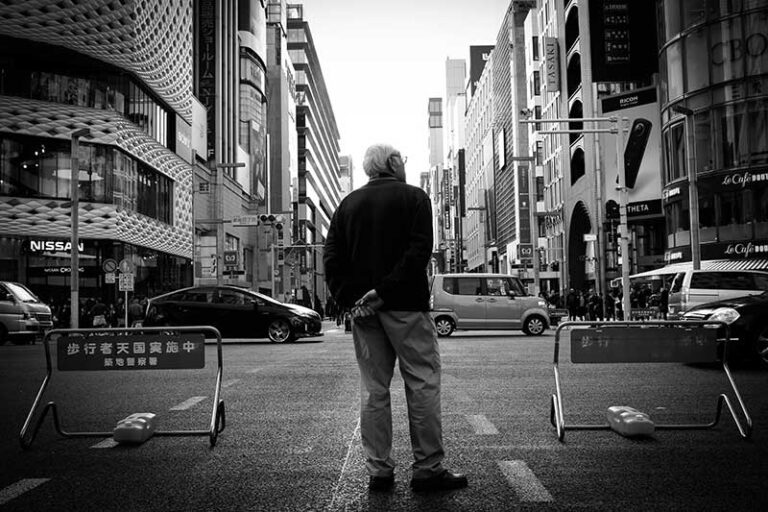
1.Japan: Robotics and the Ultra-Aged Society
The Crisis: 30% of Japan’s population is over 65, with a shrinking caregiver workforce (projected 380,000 deficit by 2040).
The Innovation:
- Panasonic Resyone Plus: A $18,000 robotic chair-bed hybrid that allows caregivers to convert a bed into a wheelchair with a button, reducing physical strain.
- Toyota’s Transfer Assist Robot: Uses AI to lift patients safely, targeting hospitals overwhelmed by Japan’s 7.5 million bedridden elderly.
Why It Works:
- Cultural trust in robotics: 68% of Japanese seniors approve of AI care tools (2023 MHLW survey).
- Compact design: Fits into tiny urban apartments (avg. 60m²).
Limitations: Sky-high costs exclude low-income families, pushing rural areas to rely on volunteer-led manual transfers.
2.Germany: Precision Engineering Meets Regulation
The Crisis: 22% of Germans are over 65, with 1.8 million in nursing homes requiring heavy-duty support.
The Innovation:
- Invacare HD 450: A $3,200 chair built for 300kg capacity, featuring puncture-proof tires and antimicrobial upholstery.
- Etac Cross X: Modular chair compliant with EU’s EN 12184 standards, customizable for bariatric or post-op patients.
Why It Works:
- Robust public funding: 80% of chair costs covered by long-term care insurance.
- Focus on durability: German chairs average 10+ years of use, reducing waste.
Limitations: Over-engineered for home use; 40% of urban families find them too bulky.
3.India: Affordability in the Face of Scarcity
The Crisis: 140 million Indians will be over 60 by 2030, yet 75% lack access to formal healthcare.
The Innovation:
- Karma Healthcare’s Bamboo Chair: $85, weighs 9kg, withstands monsoon humidity. Made by local artisans, sold via WhatsApp.
- Ortho Relief’s $120 Steel Frame: Foldable, rust-coated design for shared households (avg. 5 people/room).
Why It Works:
- Local materials: Bamboo costs 1/5th of imported aluminum.
- Grassroots distribution: 50% sold through rural ASHA health worker networks.
Limitations: 30% fail safety tests due to uneven welding, per a 2022 IIT Mumbai study.
4.USA: Tech and the Privatization Paradox
The Crisis: 56 million Americans are disabled, yet 28% can’t afford assistive devices.
The Innovation:
- Vive Health’s Transfer Chair 2.0: $499, Medicare-approved, with flip-up arms for car transfers, solves a pain point for 43% of users.
- Whill Model F: A $3,800 “SUV of chairs” with all-terrain wheels and app-controlled positioning, targeting tech-savvy Boomers.
Why It Works:
- Insurance partnerships: Vive Health works with 200+ Medicare Advantage plans.
- Customization: 20+ colors and accessories (cup holders, oxygen tank clamps).
Limitations: Rural “care deserts” lack suppliers, 23% of Kansas patients wait 6+ months for deliveries.
The Big Picture: What These Case Studies Teach Us
- Japan: High-tech solves labor shortages but risks inequity.
- Germany: Regulation ensures quality but stifles agility.
- India: Affordability saves lives but compromises safety.
- USA: Innovation thrives but access is fragmented.
The common thread? There’s no universal fix. Success lies in balancing local needs with scalable solutions, whether it’s Japan’s robots or India’s bamboo.
The Future of Mobility: 5 Market Trends Redefining Transfer Chairs for Elderly and Patients
The transfer chair market is no longer just about moving someone from point A to B. As populations age and tech accelerates, innovators are reimagining these devices as tools for independence, health monitoring, and even emotional well-being. From AI-powered cushions to chairs made of mushrooms, let’s explore the trends reshaping care for vulnerable populations worldwide.
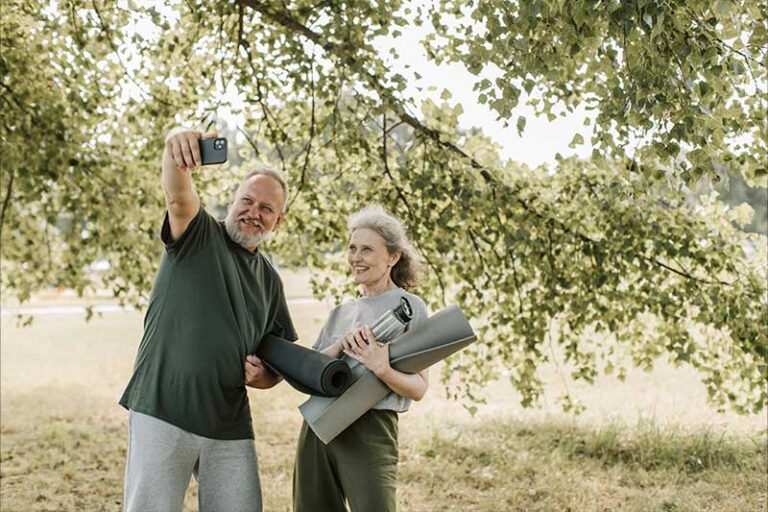
1.Smart Chairs: Where Health Tech Meets Mobility
The Trend: Transfer chairs are evolving into connected health hubs.
- Fall Detection & Alerts: Canadian startup CareCradle embeds sensors in seat cushions that text caregivers if a user slips (price: $1,200).
- Telehealth Integration: Japan’s Paramount Bed chairs sync with wearables to track vitals like blood pressure, alerting doctors via app.
- Voice Control: U.S. brand Whill offers Alexa-compatible chairs, enabling hands-free adjustments for arthritis patients.
Why It Matters: 60% of elderly falls happen during transfers (WHO). Smart features reduce risks while easing caregiver burnout.
2.Hybrid Designs: Two-in-One Solutions
The Trend: Combining transfer chairs with other assistive devices.
- Wheelchair-Transfer Chair Combos: Germany’s Ottobock sells a $2,800 model that converts in 10 seconds, ideal for small European apartments.
- Walker-Chair Hybrids: South Korea’s Winco Medical pairs a walker with a fold-out seat ($350), targeting early-stage Parkinson’s patients.
- Bed-to-Chair Robots: Panasonic’s Resyone+ (Japan) doubles as an adjustable bed, addressing mobility and sleep needs.
User Impact: Hybrids cut costs (1 device vs. 2) and reduce stigma, users feel they’re buying “multifunctional furniture,” not medical gear.
3.Green Mobility: Sustainable Materials Take Center Stage
The Trend: Eco-conscious designs for a climate-aware era.
- Bamboo & Hemp Frames: India’s GreenMove chairs ($90) use monsoon-resistant bamboo, cutting carbon footprint by 70% vs. steel.
- 3D-Printed Recycled Plastic: Dutch NGO Careables open-sources designs for chairs printed from old water bottles (cost: $50 in materials).
- Mycelium Foam: U.S. lab Ecovative tests cushioning made of mushroom roots, biodegradable and pressure-relieving.
Market Shift: 45% of EU buyers now prioritize sustainability, per a 2023 Nielsen survey.
4.Hyper-Local Adaptations: Geography as a Design Partner
The Trend: Chairs tailored to regional climates and terrains.
- Desert-Ready: UAE’s NAFFCO uses UV-resistant polymers to prevent warping in 50°C heat ($1,500).
- Tropical-Proof: Thailand’s Nittaya coats steel frames with tamarind extract to resist monsoons ($220).
- Arctic-Grade: Norway’s HES equips chairs with spiked winter tires and battery-heated seats ($3,800).
Data Point: 30% of chair failures in Global South nations are climate-related (UNCTAD 2022).
5.The Rise of Rental Models: Accessibility Over Ownership
The Trend: “Netflix for transfer chairs” gains traction.
- Japan’s Rent-a-Robot: Panasonic leases Resyone+ chairs for 300 month, appealing to families avoiding 300/month, appealing to families avoiding 18,000 upfront costs.
- India’s Chair Libraries: Startup Mobility4All rents bamboo chairs for $5/month via WhatsApp payments.
- EU’s Circular Economy: Sweden’s Etac refurbishes and resells used chairs at 40% discount, backed by government subsidies.
Why It’s Growing: 65% of low-income families can’t afford chairs outright (World Bank). Rentals bridge the gap.
The next-gen transfer chair isn’t just a mobility aid, it’s a statement about how societies value their vulnerable. Whether it’s a $50 bamboo frame or a $5,000 smart chair, the goal remains the same: to blend innovation with empathy, ensuring no one is left immobilized by age, illness, or inequality.
Navigating the Tightrope: Challenges and Opportunities in Transfer Chair Accessibility for the Elderly and Patients
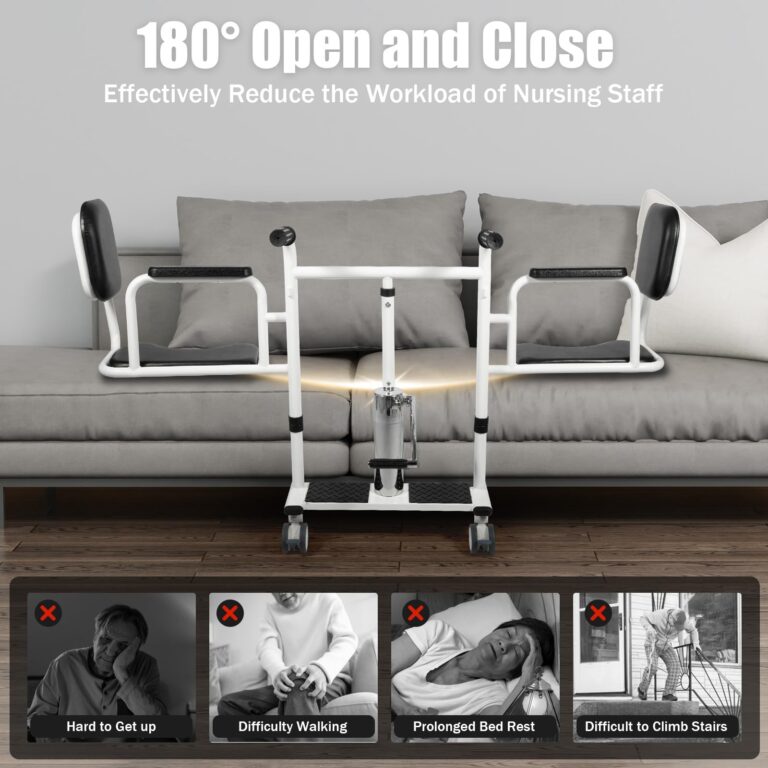
The global push to improve mobility for the elderly and patients through transfer chairs is accelerating, yet it’s a path riddled with obstacles. While innovations dazzle, systemic barriers persist. From Tokyo’s high-tech labs to Lagos’ crowded markets, the journey to equitable access reveals both stubborn challenges and transformative opportunities. Let’s dissect the critical hurdles and the promising pathways forward.
Mobility transfer chairs are designed with several features that make them ideal for safe and efficient transfers:
1.Challenge: The Cost-Quality Trade-Offd
The Issue: Cutting-edge features like AI fall detection or ergonomic designs often come with eye-watering price tags.
- High-Income Markets: A $5,000 robotic chair in Switzerland equals 6 months’ salary for a rural Indian caregiver.
- Low-Income Realities: Families in Nigeria spend 40% of their annual income on basic $150 manual chairs (World Bank, 2023).
Opportunity:
- Localized Production: India’s GreenMove slashes costs by 60% using bamboo instead of imported steel.
- Rental Models: Japan’s Panasonic leases robotic chairs for $300/month, democratizing access to tech.
2.Challenge: Cultural Stigma and Resistance
The Issue: In many societies, using mobility aids is seen as a mark of weakness.
- Middle East: 35% of Saudi elders refuse chairs, fearing social judgment (Riyadh Health Study, 2022).
- Rural Asia: Families hide chairs to avoid “shaming” relatives with disabilities.
Opportunity:
- Discreet Designs: China’s Jiujunyao disguises chairs as plush recliners, boosting adoption by 50%.
- Awareness Campaigns: Uganda’s “Mobility Pride” initiative uses radio dramas to normalize assistive device use.
3.Challenge: Regulatory Fragmentation
The Issue: Safety standards vary wildly, stifling innovation and risking lives.
- EU’s EN 12184: Mandates rigorous testing but adds 25% to production costs.
- Global South Gaps: 60% of chairs sold in Southeast Asia lack certifications, leading to 200,000 annual injuries (WHO).
Opportunity:
- Universal Standards Advocacy: Groups like ISO are drafting global guidelines for affordable, safe chairs.
- Grassroots Certification: Kenya’s Mobility Africa trains local workshops to meet basic safety benchmarks.
4.Challenge: Climate and Infrastructure Limits
The Issue: Chairs fail under extreme conditions, leaving users stranded.
- Desert Heat: Standard polymers warp at 50°C, common in UAE summers.
- Tropical Humidity: Philippines’ monsoon rains rust steel frames within months.
Opportunity:
- Material Innovation: Thailand’s Nittaya uses tamarind-coated steel, extending chair lifespan by 300%.
- Community Co-Design: Brazil’s Freedom Chair involved favela residents to create stairs-friendly models.
5.Challenge: Tech Divide in Aging Populations
The Issue: Smart chairs demand digital literacy and infrastructure many lack.
- Rural USA: 30% of elderly lack broadband for app-connected chairs.
- Africa’s Power Gaps: Only 28% of Sub-Saharan clinics have reliable electricity for charging devices.
Opportunity:
- Low-Tech Hybrids: South Korea’s Winco combines manual controls with battery backups.
- Solar Solutions: Nigeria’s SunChair integrates solar panels for off-grid charging.
5.Opportunity: Public-Private Partnerships
The Spark: Collaboration can bridge gaps no sector can solve alone.
- Germany’s Model: Government funds 80% of chair costs via insurance, while firms like Invacare deliver premium quality.
- NGO Innovation: WHO’s ATscale partners with manufacturers to distribute 500,000 chairs in conflict zones by 2025.
7.Opportunity: Policy as a Catalyst
The Lever: Governments hold keys to scaling access.
- France’s Tax Breaks: 70% reimbursement spurs mid-range chair sales.
- Chile’s National Plan: Mandates wheelchair/transfer chair access in all public buildings by 2026.
The transfer chair industry stands at a crossroads: Will it prioritize profit over inclusion, or can it become a beacon of equitable aging?
The challenges are daunting, but the opportunities, localized design, policy grit, and cultural empathy, are transformative. For every Tokyo retiree in a robotic chair, there’s a grandmother in Nairobi deserving equal dignity. The question isn’t just how to build better chairs, it’s how to build a better world, one transfer at a time.
The global demand for transfer chairs reflects a complex interplay of aging populations, healthcare disparities, cultural norms, and economic realities. High-income regions prioritize advanced, regulation-compliant designs, while emerging economies innovate with affordable, climate-resilient solutions using locally sourced materials.
Persistent challenges, such as cost barriers, stigma, and fragmented regulations, are countered by opportunities like rental models and grassroots collaborations. Success lies in balancing empathy and innovation: fostering hyper-localized solutions, equitable policies, and cross-sector partnerships to transform mobility aids from luxury tools into universal instruments of dignity, empowering vulnerable populations to live safely and independently across diverse environments.
